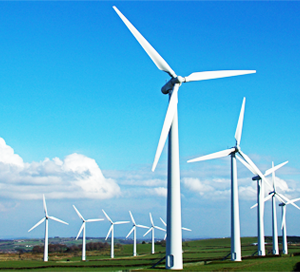Early last December, our leaders traveled to Paris in the hope of ending the world’s reliance on fossil fuels. President Obama was one of many who claimed that the month-long climate talks will combat global warming. Yet the irony of traveling thousands of miles via jet airplane to discuss abolishing fossil fuels is not the only embarrassing blemish on their efforts.
Many believed the ambitious accord would cause developed countries to spend more taxpayer funds on renewable energy technologies; and while the United States did renew its Production Tax Credit for wind and solar, the UK is cutting investment for their renewables industry. Experts lament that this will remove one gigawatt of renewable generation from that country, but this reveals an ugly truth: Except for nuclear power, alternatives to oil and gas are not ready for prime time.
Renewable energy sources have been sold to the public as a winner. This is more than wishful thinking—it is destructive self-deception. The fact of the matter is that expanding use of solar and wind power could jeopardize electricity reliability and might well undercut efforts to reduce greenhouse-gas emissions.
Yet solar and wind energy receive generous federal subsidies and state governments have enacted a range of pro-renewable energy policies, including requirements that utilities generate politically-determined percentages of their electricity from solar and wind power. As a result, solar power is expanding faster than any other energy source. Old Sol still accounts for only one percent of total U.S. electricity supply, however, inviting skepticism about its long-term prospects.
If not for substantial governmental support, solar cell producers would have failed years ago. Solar power benefits from a federal tax credit that allows taxpayers to write off 30 percent of the cost of installing solar panels on rooftops or in backyards. Great, but because the efficiency of solar cells is degraded by dust, snow and bird droppings, not to mention cloudy weather, they are not for everyone.
Wind power also benefits from a federal tax credit (the credits expire at the end of 2016, unless Congress decides to extend it). It should be obvious that wind turbines are not manufactured in wind-powered factories, nor are solar panels assembled in sun-powered workshops. But proponents of renewable energy sources never talk about the carbon footprints of manufacturing, distributing and installing the equipment needed to use them. And no one, to our knowledge, has figured out how to dispose of solar panels safely once their useful lives end—they can’t just be dumped in the local landfill.
President Obama’s myopic view of energy isn’t helping. He is doing his best to restrict the use of natural gas and nuclear power. His Clean Power Plan is skewed in favor of renewables, but its goal of reducing carbon emissions to a level at least 26 percent below what they were in 2005 can’t be achieved without base-load natural gas and nuclear power. Both are more reliable and affordable than solar and wind power and require far less land.
Just consider what’s happened since the nation switched its primary electricity source from coal to gas: Carbon dioxide emissions from energy production are at their lowest level since the early 1990s. That’s because natural gas has half the carbon intensity of coal. Even better, nuclear plants are emissions-free and account for more than 60 percent of the country’s zero-carbon electricity. It is foolish to write off the economic and environmental value of natural gas and nuclear power.
Instead of imposing heavy carbon taxes, now is the time to eliminate subsidies for all power sources, renewable and non-renewable alike. Doing so would save billions of dollars and allow all energy sources to compete on their own merits, without taxpayers’ help.
If that were to happen, the consequences nationally would be profound. The price of electricity would fall, and utilities would figure out how to adapt. It’s likely we would see greater use of natural gas and nuclear power for electricity production, and that is not a bad thing. Natural gas plants and nuclear reactors supply electricity around the clock, day after day, whereas solar and wind are intermittent, available only on days when the sun is shining and the wind is blowing.
Finally, a free energy market would also benefit the environment by minimizing the land and resources required to manufacture, distribute, install, and dispose of wind turbines and solar panels; we would also save thousands of birds and bats from premature death at the hands of those technologies.
Any politician committed to environmentalism should therefore reconsider the reliability of renewables instead of blindly favoring their own energy-industry favorites.

